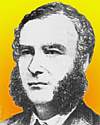
On 11 Jun 1829, Alfred Newton was born, a British zoologist and ornithologist who helped prepare the first Acts of Parliament passed for the protection of birds. He was handicapped with severe hip joint problems and needed two canes to assist walking. But this did not prevent him from travelling in his research to regions as far apart as Iceland and the West Indies. He left a body of written work that is remains highly respected. You can learn more about this interesting scientist by reading the preface that the Scottish geologist, Archibald Geikie, wrote for the book Life of Alfred Newton.

On 11 Jun 1910, Jacques Yves Cousteau was born, famous for the extensive ocean research he undertook from his vessel, the Calypso. Today's book pick is: Jacques Cousteau's Calypso, by Jacques Yves Cousteau. With many color pictures from all over the world, it is an arm chair adventurer's dream reference. It gives many details of the Calypso, and the many changes in her configuration as changed through the years of voyages. Yet, those interested in oceanography and marine exploration will not be disappointed with the many abundant details of her numerous adventures in distant locales.
It is available from Amazon, typically about New from $94.62. Used from $7.89. (As of earlier time of writing - subject to change.)
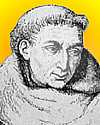 | There are four great sciences, without which the other sciences cannot be known nor a knowledge of things secured … Of these sciences the gate and key is mathematics … He who is ignorant of this [mathematics] cannot know the other sciences nor the affairs of this world. |
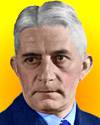 | It would be interesting to inquire how many times essential advances in science have first been made possible by the fact that the boundaries of special disciplines were not respected… Trespassing is one of the most successful techniques in science. |
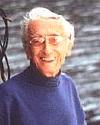 | Buoyed by water, he can fly in any direction—up, down, sideways—by merely flipping his hand. Under water, man becomes an archangel. |
| Before you look at today's web page, see if you can answer some of these questions about the events that happened on this day. Some of the names are very familiar. Others will likely stump you. Tickle your curiosity with these questions, then check your answers on today's web page. | |
| Births | |
 | Born on 11 Jun 1910, Jacques Yves Cousteau, French naval officer, oceanographer, marine biologist and ocean explorer, is known for his extensive underseas investigations. He was co-inventor of the aqualung which made SCUBA diving possible (1943). He modified a WWII ship into the research vessel Calypso, in 1950. During the war, what was the function of the ship that became the Calypso? |
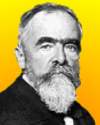 | On 11 Jun 1842, Carl von Linde was born, a German chemist and engineer who invented something that became indispensable in the brewing of lager beer. What was the invention Carle von Linde first tested in a Munich brewery? |
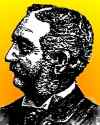 | On 11 Jun 1824, Orson Desaix Munn was an American ornithologist who became the publisher of a popular science magazine that is still widely read today. It originally published a weekly list of all patents, and dealt with inventions and inventors, which led him to form a further enterprise, Munn & Co., a patent agency. The magazine and patent agency together caused a rapid growth in the U.S. patent system. Around 1860, one-third of all patents issued by the U.S. Patent Office were prosecuted by Munn & Co. What is the name of the magazine he published? |
| Deaths | |
 | Roger Bacon (died 11 Jun 1292) was an English scholar who was one of the first to propose mathematics and experimentation as appropriate methods of science. He studied mathematics, astronomy, optics, alchemy, and languages. Bacon was the first European give a detailed description of the process of making a certain product, much used for centuries. Can you name the invention? |
| Events | |
| | On 11 Jun 1644, Florentine scientist, Evangelista Torricelli described in a letter the invention of his “torricellian tube.” What is the familiar name of his invention? |
 | On 11 Jun 1975, Harvard professor Michael McElroy and other scientists concerned about atmospheric ozone depletion proclaimed their support for a certain ban, which the U.S. government implemented three years later. What was the banned product? |
Fast answers for the previous newsletter for June 10: ants • four-stroke internal-combustion engine • Robert Brown • André-Marie Ampère • curved • 13 days • the decade including the year 1869.
 If you enjoy this newsletter, the website, or wish to offer encouragement or ideas, please send feedback by using your mail reader Reply button.
If you enjoy this newsletter, the website, or wish to offer encouragement or ideas, please send feedback by using your mail reader Reply button. Your click on a Facebook, StumbleUpon, or other social button on the site webpages is also a welcome sign of appreciation. Thank you for using them.
© This newsletter is copyright 2020 by todayinsci.com. Please respect the Webmaster's wishes and do not put copies online of the Newsletter — or any Today in Science History webpage. (If you already have done so, please remove them. Thank you.) Offline use in education is encouraged such as a printout on a bulletin board, or projected for classroom viewing. Online, descriptive links to our pages are welcomed, as these will provide a reader with the most recent revisions, additions and/or corrections of a webpage. For any other copyright questions, please contact the Webmaster by using your mail reader Reply button.
--
If you do not want to receive any more newsletters, Unsubscribe
To update your preferences and to unsubscribe visit this link
Executive Real Estate Business Class
-
"It was like a man with wings. It wasn't like anything you'd see on TV or in a monster movie." ...
About the publisher
Search This Blog
Blog Archive
-
▼
2021
(585)
-
▼
June
(64)
- On This Day for June 30 - Night of the Long Knives...
- Newsletter for Wednesday 30 June.
- On This Day for June 29 - London's Globe Theatre d...
- Newsletter for Tuesday 29 June.
- On This Day for June 28 - Assassination of Archduk...
- Newsletter for Monday 28 June.
- On This Day for June 27 - Yen made official moneta...
- Newsletter for Sunday 27 June.
- On This Day for June 26 - Opening of CN Tower, Bab...
- Newsletter for Saturday 26 June.
- On This Day for June 25 - Korean War begun, Antoni...
- Newsletter for Friday 25 June.
- On This Day for June 24 - Russia invaded by Napole...
- Newsletter for Thursday 24 June.
- On This Day for June 23 - Battle of Bannockburn, C...
- Newsletter for Wednesday 23 June.
- On This Day for June 22 - Mutiny against Henry Hud...
- Newsletter for Tuesday 22 June.
- On This Day for June 21 - Japanese forces defeated...
- Newsletter for Monday 21 June.
- On This Day for June 20 - Casket Letters found, Ho...
- Newsletter for Sunday 20 June.
- Tonight at 8/7c: Watch ‘Fight the Power’
- On This Day for June 19 - Rosenbergs executed for ...
- Newsletter for Saturday 19 June.
- On This Day for June 18 - War of 1812 begun, Sir P...
- Newsletter for Friday 18 June.
- On This Day for June 17 - Arrest of O.J. Simpson, ...
- Newsletter for Thursday 17 June.
- On This Day for June 16 - First woman in space, Jo...
- Newsletter for Wednesday 16 June.
- On This Day for June 15 - Magna Carta sealed by Ki...
- Newsletter for Tuesday 15 June.
- On This Day for June 14 - First prisoners at Ausch...
- Newsletter for Monday 14 June.
- On This Day for June 13 - Historic meeting between...
- Newsletter for Sunday 13 June.
- On This Day for June 12 - Election of Boris Yeltsi...
- Newsletter for Saturday 12 June.
- Listen Now! Blindspot: Tulsa Burning Podcast
- On This Day for June 11 - Oklahoma City bomber exe...
- Newsletter for Friday 11 June.
- On This Day for June 10 - First “witch” hanged in ...
- Newsletter for Thursday 10 June.
- On This Day for June 9 - Landslide reelection vict...
- Newsletter for Wednesday 9 June.
- On This Day for June 8 - Michelangelo's David inst...
- Newsletter for Tuesday 8 June.
- Action required: Update your HistoryExtra password
- On This Day for June 7 - Lateran Treaty ratified, ...
- Newsletter for Monday 7 June.
- On This Day for June 6 - Normandy Invasion begun, ...
- Newsletter for Sunday 6 June.
- On This Day for June 5 - Start of the Six-Day War,...
- Newsletter for Saturday 5 June.
- On This Day for June 4 - Dunkirk evacuation ended,...
- Newsletter for Friday 4 June.
- Tonight: ‘Alone’ Returns at 9:30/8:30c
- On This Day for June 3 - Pro-democracy protest in ...
- Newsletter for Thursday 3 June.
- On This Day for June 2 - Elizabeth II crowned quee...
- Newsletter for Wednesday 2 June.
- On This Day for June 1 - Debut of CNN, Morgan Free...
- Newsletter for Tuesday 1 June.
-
▼
June
(64)
-
Blogroll
-
About
HistoryFact










0 comments:
Post a Comment